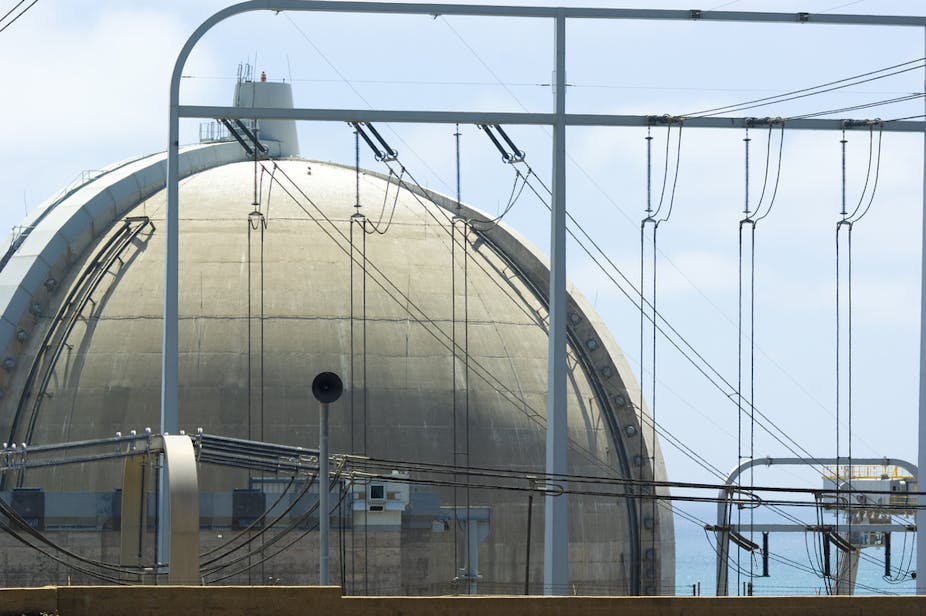The Fukushima incident has been upgraded to an INES Level 7 of severity. The Australian Science Media Centre asked three experts what this means.
Dr Pradip Deb is a Senior Lecturer in Medical Radiations at the School of Medicals Sciences, RMIT University
“The increase of the level of Fukushima incident to level 7 is combined re-classification of the earlier individual assessments of the different level of incidents of different reactors. This does not mean that it will do any extra harm to the public life. Although this level 7 is the same level as Chernobyl incident, the Japanese Nuclear and Industrial Safety Agency estimated that the amount of radioactive material released in Fukushima is ninety percent less than Chernobyl.
The International Nuclear and Radiological Event Scale (INES) is a scale of nuclear incident and accidents to report to the public like earthquake scales.
Level 1: Anomaly. This level is when minor problems with safety components, breach of operating limits at a nuclear facility, loss or theft of low activity radioactive sources.
Level 2: Incident. 10 times higher than Level-1. Exposure rate more than 50 mSv/hour with significant contamination within the facility.
Level 3: Serious Incident. 10 times higher than Level-2. Exposure rate is more than 1 Sv/hour in an operating area with severe contamination. Low probability of significant public exposure.
Level 4: Accident with local consequences. 10 times higher than level-3. Fuel melt or damaged and release of significant quantities of radioactive material within an installation with high probability of public exposure. Level-4 is called for if at least one death from radiation and minor release of radioactive material so only local food controls are necessary.
Level 5: Accident with Wider Consequences. This level is 10 times higher than level-4 and is called for when the reactor core is severely damaged and large amount of radioactive materials are released with a high probability of significant radiation exposure to the public. And also when several deaths from radiation exposure and planned radiation control is needed.
Level 6: Serious Accident. 10 times higher than level-5. This level is declared when significant amount of radioactive material is released in the environment and planned controlling procedures need to be taken.
Level 7: Major Accident. This is 10 times higher than level-6 and the highest level of accident. This is declared when significant amount of radioactive material is released into the environment which can affect public health. Implementation of planned and extended radiation safety programs are needed at this level.
Level-5 is the highest contamination level as was declared earlier. Now after accumulating the total release of radioactive materials in this accident the level is re-classified as the highest level as a one whole accident. Due to yesterdays 7 scale earthquake, there was no extra radioactivity. The radiation level near the reactors are decreasing as it should be. So this new classification (level-7) should not add extra impact.”
Dr Don Higson is a retired nuclear safety specialist and Fellow of the Institution of Engineers Australia, Fellow of the Australasian Radiation Protection Society
“This refers to the IAEA event scale. I do not have it in front of me but, as I recall, it relates to nuclear incidents/accidents on a scale of 1 to 7 with 7 being the worst. This would imply that someone is rating the Fukushima incident as being as bad as the Chernobyl reactor accident. To my mind, this would be nonsense. Consider the following consequences:
Number of workers hospitalised with acute radiation sickness Chernobyl 134 Fukushima none
Number of deaths of workers within a month Chernobyl 31 Fukushima none
I could go on.”
Dr John Price is a former member of the Safety Policy Unit of the National Nuclear Corporation UK, an Adjunct Associate Professor at Monash University, Australia, and now a private consultant
“Although the level has been raised to 7 today, it doesn’t mean the situation today is worse than it was yesterday. It means the event as a whole is worse than previously thought.
The INES levels are used to define a nuclear event as a whole, they aren’t a moment-by-moment measure. To a certain extent you can say that they are non-objective as it’s just a case of when the boxes are ticked rather than someone saying this is now a really big event.
The reason Fukushima Dai ichi can be placed in Level 7 is because of the INES definition:
Major release of radioactive material with widespread health and environmental effects requiring implementation of planned and extended countermeasures.
The releases of radiation got worse due to several events during the first week (explosions at the plant etc), and it is measuring the extent of these first-week events that has increased the level now.
The 10000 TBq has now reduced to 1000 TBq presumably through decay. The total Bq being stated is presumably the total radioactivity that a Japanese organisation has calculated to have been released from the reactors for the incident up to this date. 1 Bq is one decay per second. It is impossible to determine what is happening to humans near the plant since the radio-active particles will settle. The human effect depends on where the human is in relation to the particles.
One problem is that the radioactive material is able to be spread by the wind. It appears that they are now scattering an "anti-scattering agent” (NISA update 9 April 0800) which is presumably to stop particles from leaving the plant site.“

